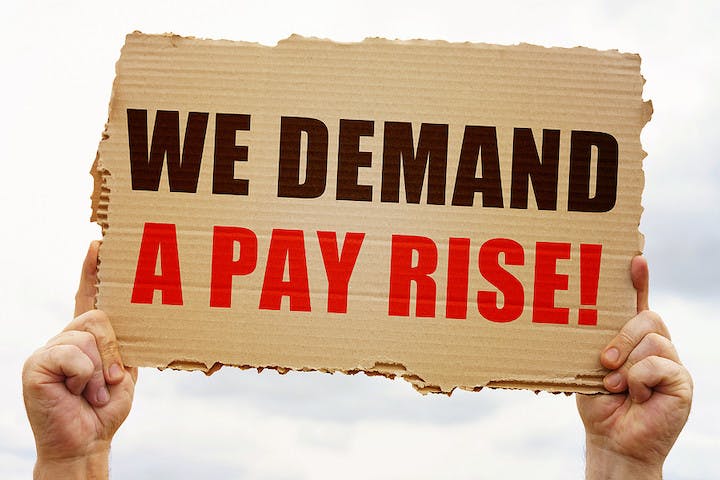Loathed as I am to be the bearer of bad news, it’s as clear as day that employers hoping for some sort of respite from pressure to increase wages will be sorely disappointed.
Inflation remains stubbornly high at 8.3%, but the Federal Reserve’s efforts to tamp it down with interest rate increases are being rendered useless by continued increases in spending that simply add to the money supply.
Take stimulus payments and extended unemployment benefits paid during the lockdowns. This doubled the net worth of the bottom half of American households. Though most payments have stopped, households still have $2 trillion in excess savings. The deceptively named Inflation Reduction Act will pump $485 billion into the economy. The student debt-cancellation adds an additional $519 billion to the total. In an overheated economy where supply significantly lags demand, excess cash can only worsen a bad situation.
So where are we now?
Even though median earnings are rising by 7% pa (the fastest rate in over twenty years), these increases are still not enough to make up for stagnant wages in earlier years. The Census Bureau estimates that the median household income in 2021 of $71,200 was only 1% more than in 2020. Surging inflation means that many workers are earning less in real terms than they were a year earlier.
With the labor market remaining extremely tight – there are 11 million jobs open and 6 million unemployed people seeking work – the effect is that workers continue to have significant leverage to demand higher wages and salaries.
Take the recently averted rail workers’ strike as an example. Railroad companies agreed to give workers a 24% increase in wages over five years, retroactive to 2020. That also means that another big increase will be expected in two years’ time.
No good news
Easing wage pressures can happen in one of two ways: either by an increase in the labor supply or an increase in unemployment.
There’s little to suggest the first will happen. Despite an unprecedented number of job openings, millions of workers are choosing to stay out of the labor force.
There has never been a time when there have been so many opportunities for work and so few people with any interest in taking them.
The imbalance between jobs and available workers had started long before Covid-19. By 2019, work rates for men aged 25-54 (The prime age) had fallen to levels last seen during the Great Depression a century ago. For each prime-age unemployed man seeking work, another four were sitting on the sidelines with no interest in finding work. The pandemic merely exacerbated an existing problem. Illness caused by Covid-19 shrank the labor force by about 500,000 people, and that may continue if workers keep getting sick.
There is a glimmer of hope though.
Small numbers of those that retired during the pandemic are returning to work, possibly because their finances have been ravaged by inflation. Some are attracted to work because of the increasing availability of remote and flexible work options. But the numbers are small, only about 3% of retirees have reentered the labor force.
The other option for reducing wage pressures is an increase in unemployment, which is the same as increasing the availability of workers.
The Federal Reserve is projecting that unemployment needs to rise just a little to 4.1% to bring inflation under control. But most economists now agree that this will still leave inflation at over 8% and only a big increase in unemployment will ease wage pressures and tame inflation. How big? Estimates are that unemployment would have to rise to at least 6.5% and stay there for two years to bring inflation down to the 2% level it was in 2019. That would mean another 5 million people being out of work.
That much unemployment for two years is not politically palatable.
So it’s highly unlikely that any policy actions will be permitted to achieve the goal of low inflation if the cost is putting millions of people out of work. That happened during the 1980s when the Federal Reserve engineered two massive but brief recessions to get inflation under control. But the President at the time was Ronald Reagan, and the current President is not.
The only conclusion that can be reached is that employers will continue to face significant wage pressures.
Forewarned is at least forearmed.
